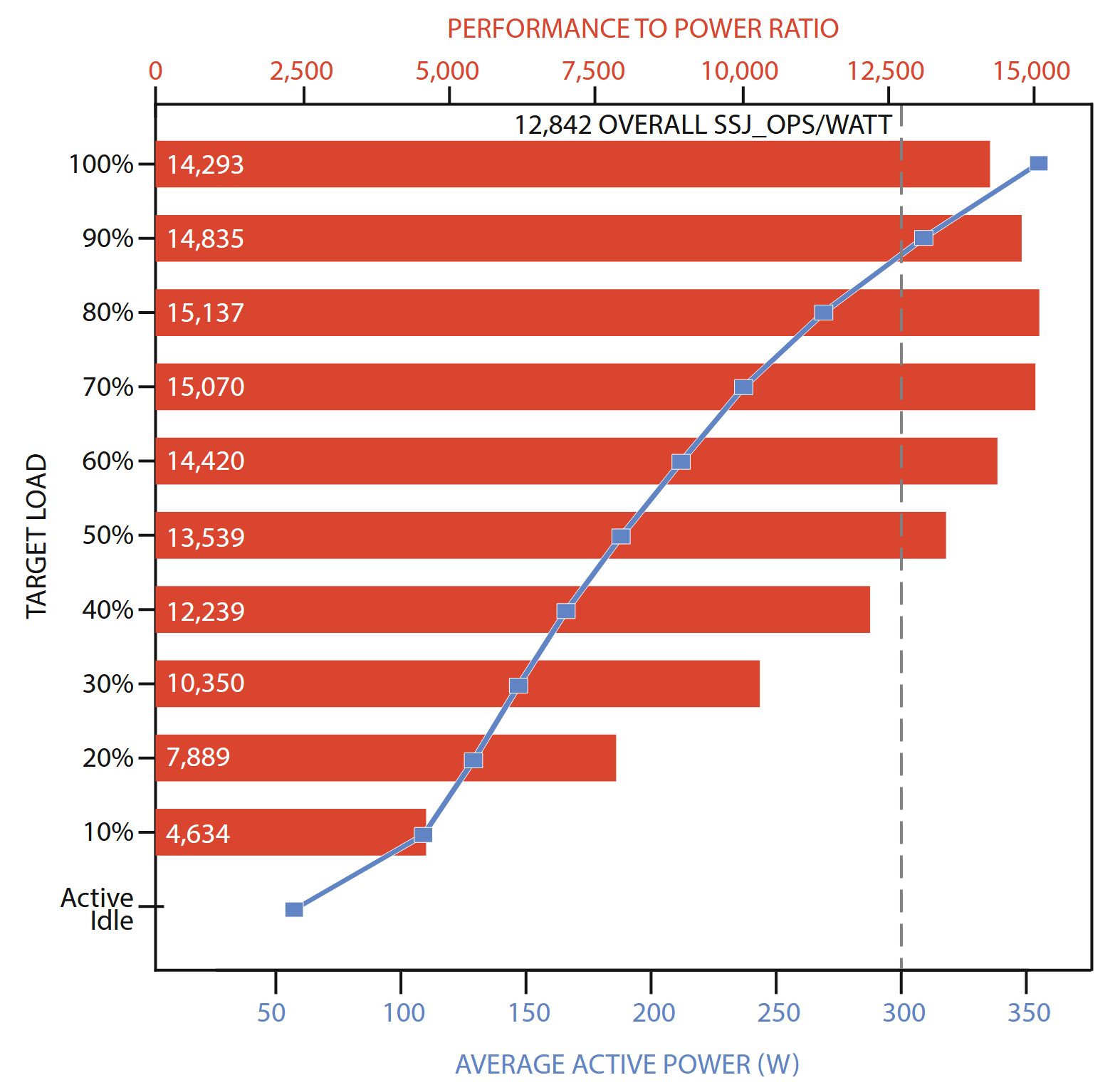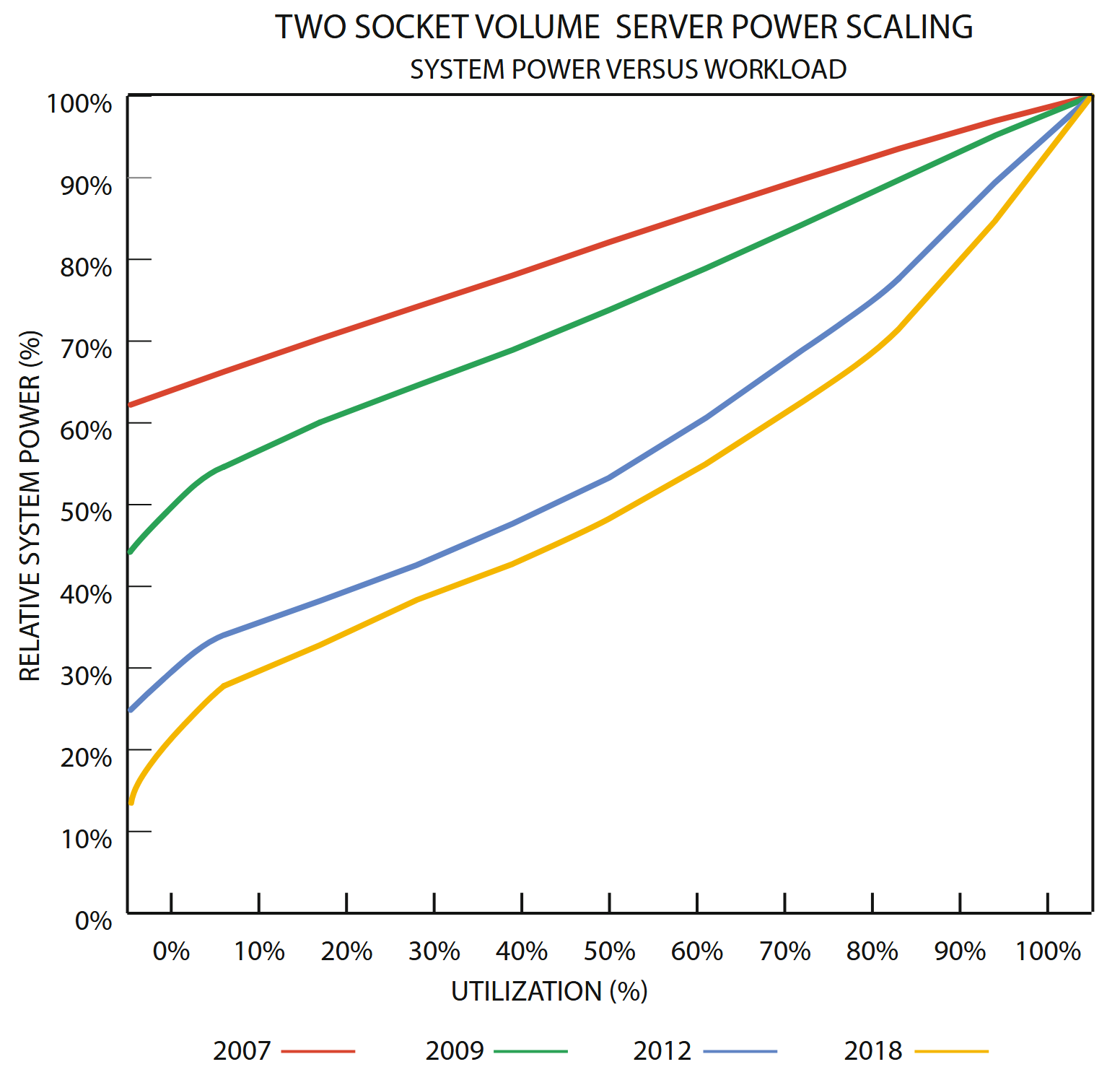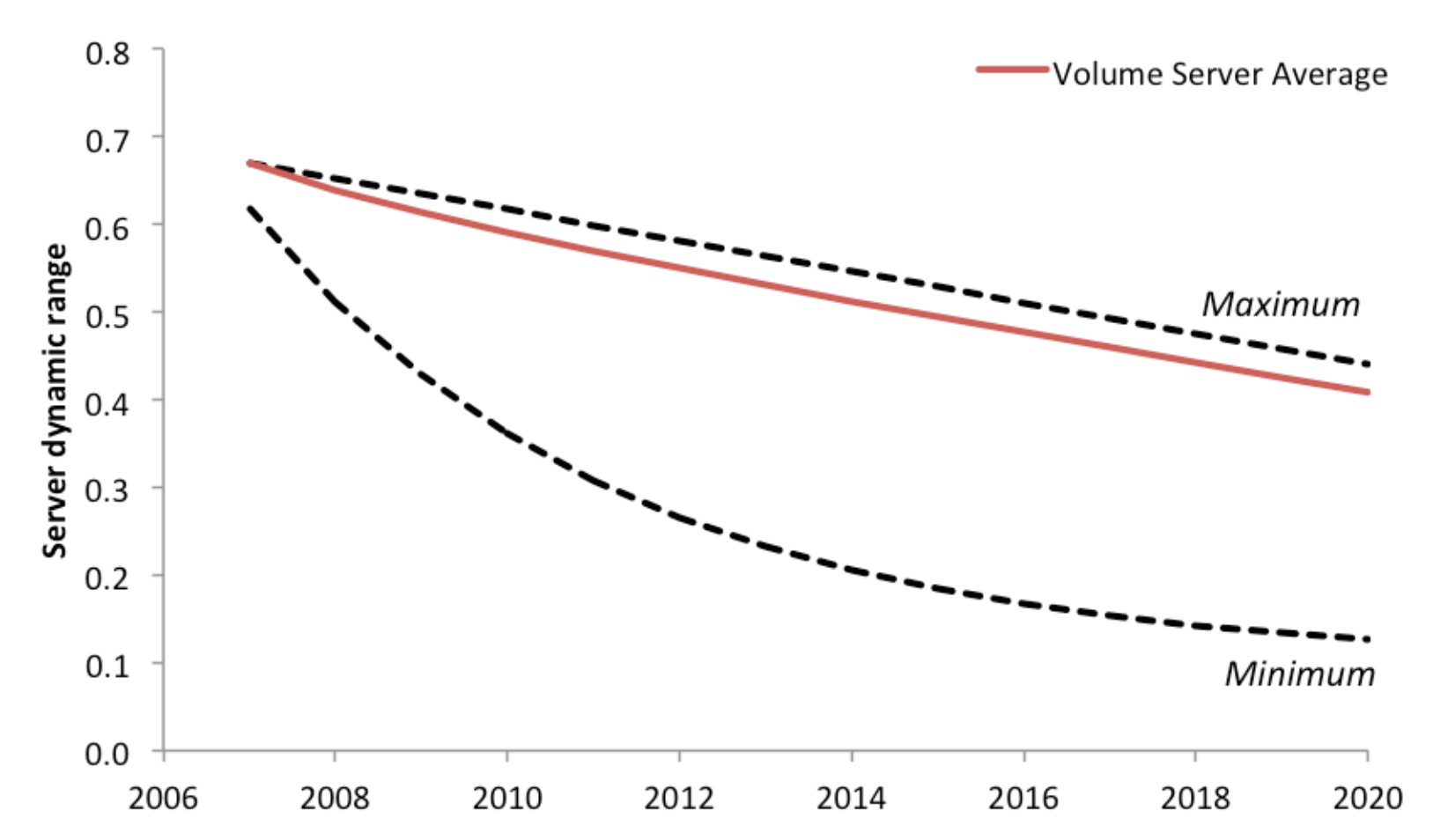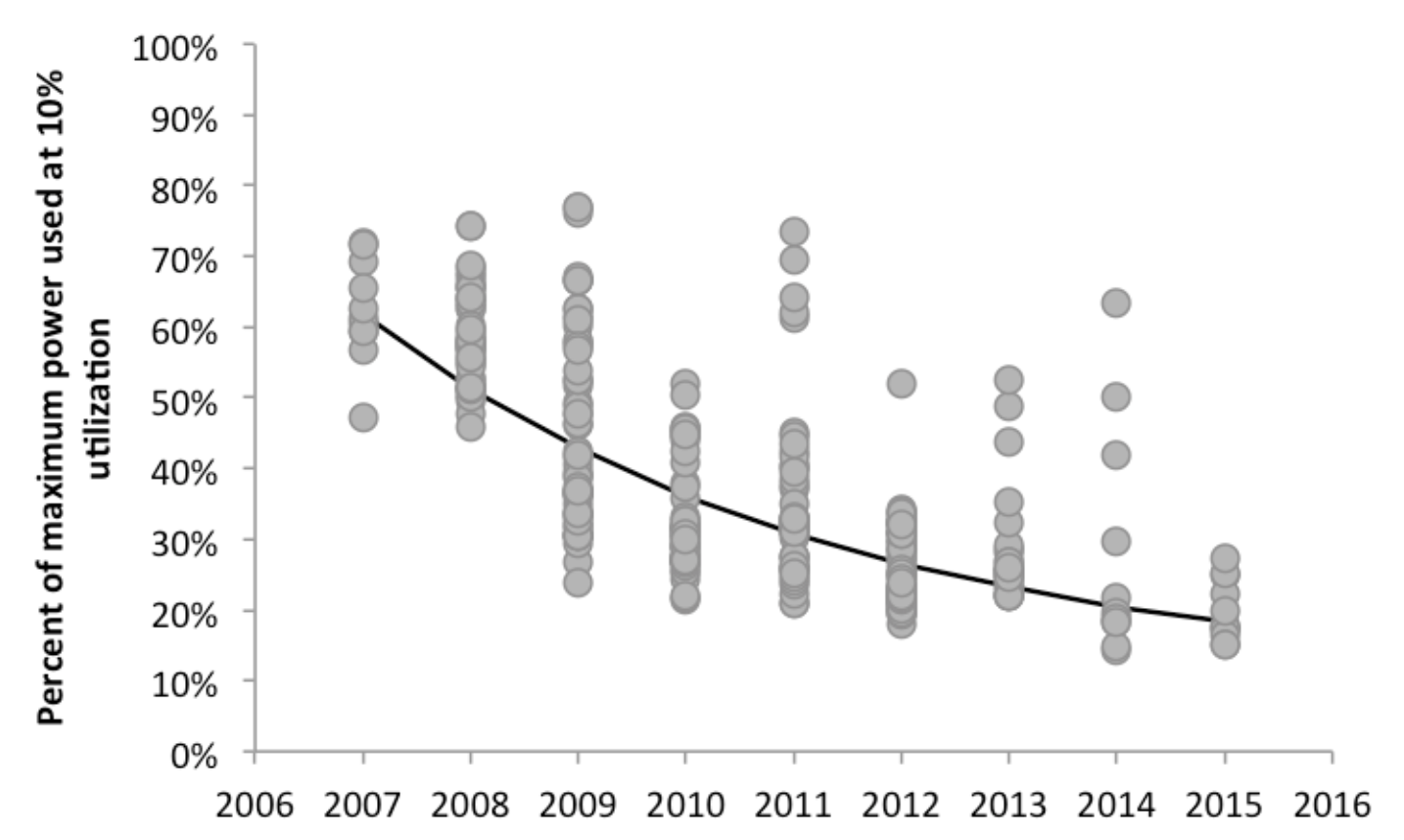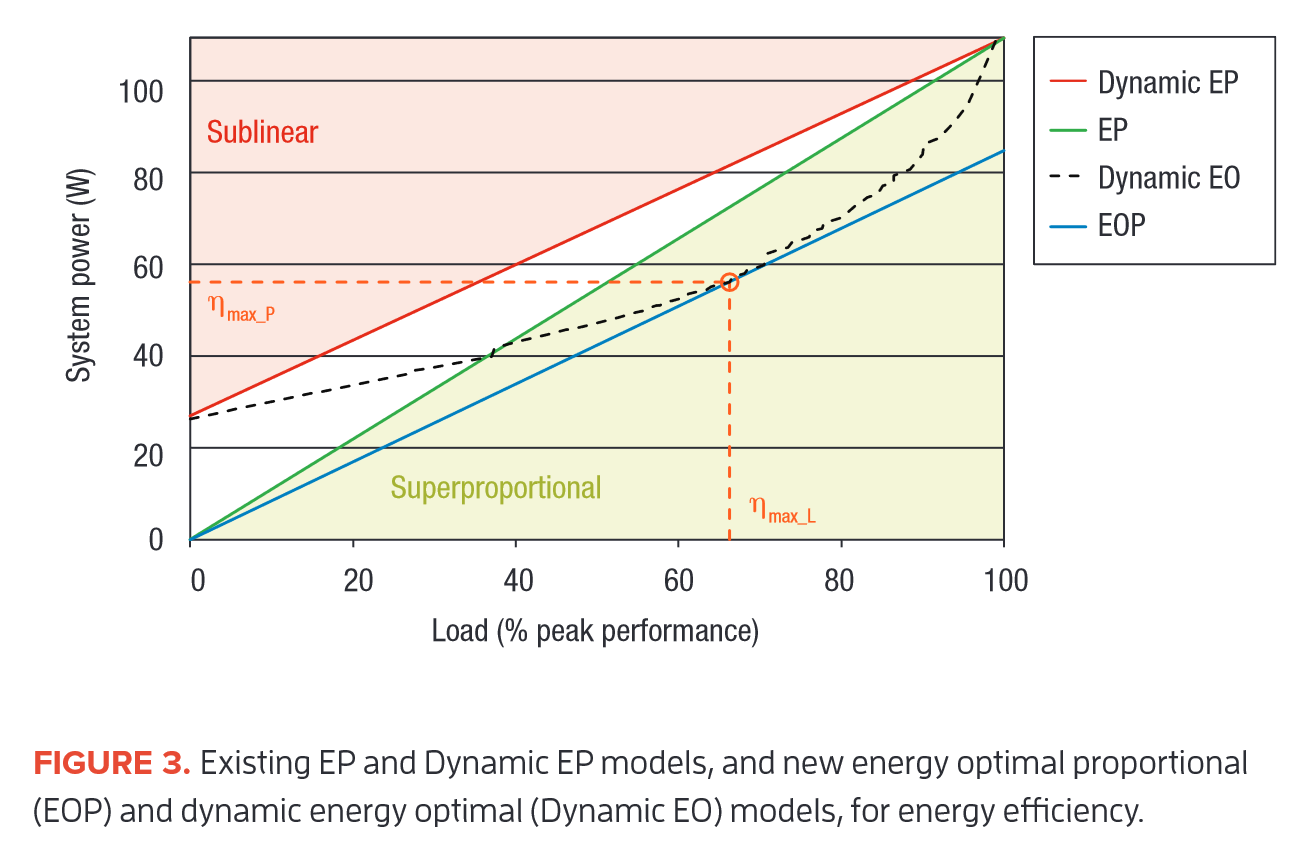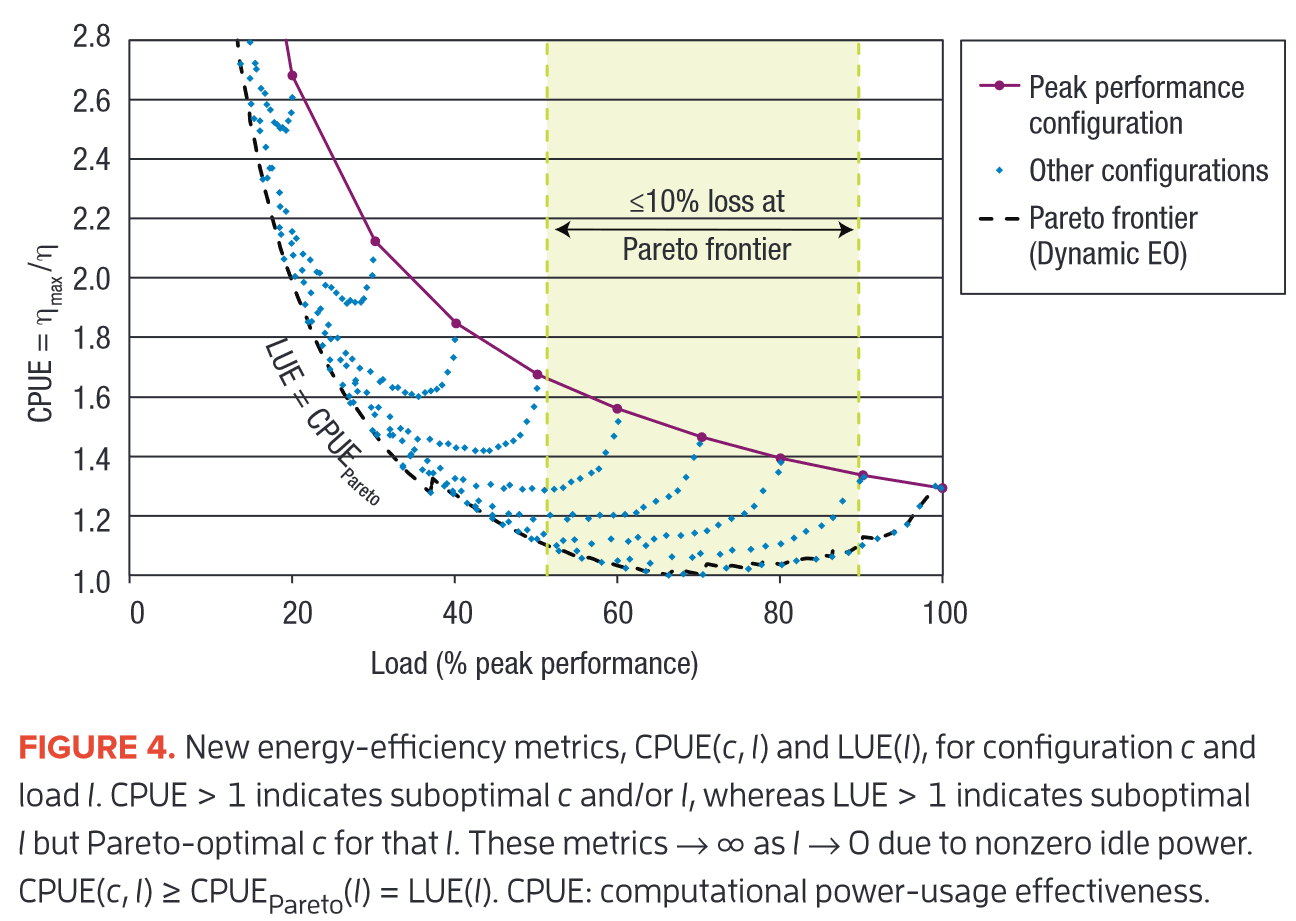Energy Proportionality of Servers and Dynamic Range
Server Utilization
Server Utilization is often times quite low that leads to inefficient operation of IT workloads. Servers are most efficient at high utilization rates.
See also Optimize Server Utilization for Energy Efficiency and Embodied Carbon.
Intro
Principle 5: Energy proportionality - Training | Microsoft Learn
Literature / Studies
Barroso et al. (2007, 2009, 2013, 2019)
Shehabi et al. (2016)
Dynamic Energy Optimal
Modern CPUs have reconfigurable resources at runtime. 'Therefore, the original energy proportionality model by Barroso and Hölzle is not the perfect goal anymore.
Sen & Wood propose a new model called dynamic energy optimal and a new metric called computational power-usage effectiveness (CPUE):
→ With an optimal configuration modern processors achieve the best energy efficiency with a load of around 51-90 percent.
